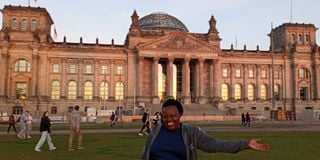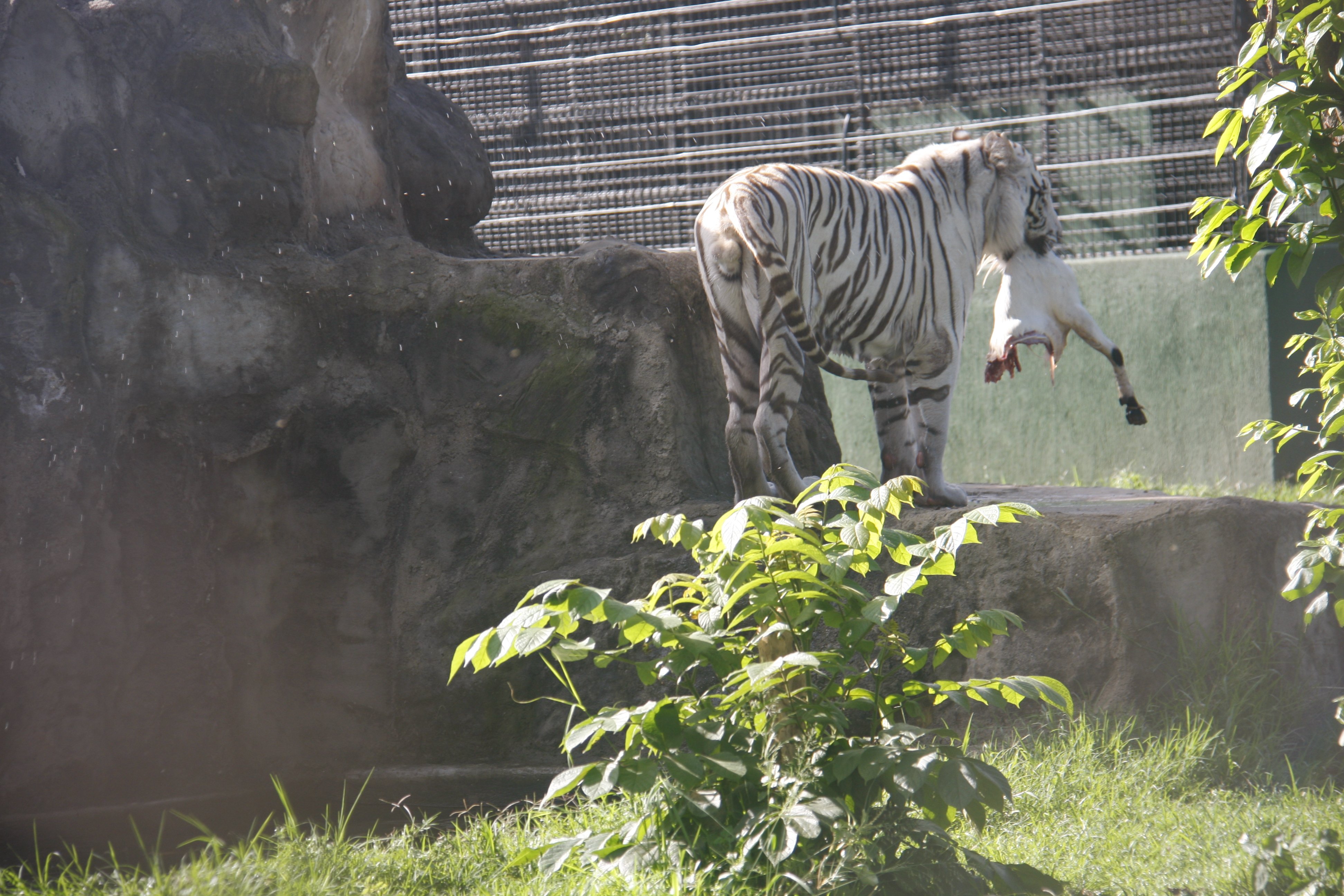Sites that left us gaping in Germany

The writer at the Germany Federal Parliament recently. Photos | Lominda Afedraru
What you need to know:
- Sightseeing. When we visited Berlin, Germany’s capital and its surroundings, many historical attractions left us informed, writes Lominda Afedraru.
I first visited Germany in 2017 when we were on a fact-finding tour exploring how scientists were conducting research about Marine science.
However, my recent visit to Berlin and its vicinities which was organised by Goethe-Institute, a cultural institute of the Federal Republic of Germany and various Germany embassies where participants came from including Uganda.
Our team comprised agricultural science journalists, policymakers and scientists.
Jan Kretzschmar, our tour guide notes that the sites - including the Holocaust Memorial and Berlin Wall’s graphitised remains - are reminders of the city’s turbulent 20th century history. The 18th century Brandenburg Gate has become a symbol of reunification.
The city is also known for its art scene and modern landmarks such as the gold-coated, swoop-roofed Berliner Philharmonie, built in 1963.
Kretzschmar explains that Berlin is located along the Spree River in eastern Germany and lies within the state of Brandenburg.
He contends that Berlin is renowned for its vibrant cultural scene and way of life that is somehow all-go yet relaxed.
In fact, the city is best known for its striking contrasts. Historical buildings stand alongside modern architecture as the past and present blend.
Several museums, libraries containing books detailing ancient history of the country including kingship and political rulers are dotted across Berlin.
What surprised the team is the simplicity of the home of former Chancellor of Germany Angella Merkel located right in the heart of the city only with one Policeman guarding the place.
History of Berlin Wall
A walk through the remains of the great Berlin Wall with Tomasz Filochowski, another of our tour guides, brings mixed feelings as he narrates the story of the construction of the wall in 1961.
There is about one kilometre stretch of the wall covered in paintings indicating all sorts of cruelty by the rulers of the time.
Tomasz said the Wall arose on August 13, 1961 when the border crossing between the Eastern Soviet Occupied Zone of Berlin and the Western American, British and French controlled side began to be sealed.
At first, border wires were used but later a concrete wall was erected to separate families from East and West Berlin during the Cold War.

Filochowski says the fall of the Berlin Wall on November 9, 1989 during a peaceful revolution was a pivotal event in world history.
The stretch of the wall has now turned into a tourist attraction. Most people visiting Berlin will not miss the opportunity to take photos against the numerous paintings including the famous spot where Soviet leader Leonid Brezhnev and East German President Erich Honecker shared a fraternal Kremlin kiss as a sign of reconciliation.
Historical sites
In an evening tour with Kretzschmar, our group was taken to the famous site where the 1885 international conference to divide Africa started. This conference was called by the German Chancellor Bismarck to settle how European countries would claim colonial land in Africa and to avoid a war among European nations over African territory.
The only clue as to the purpose of the November gathering of White men was hung on a Posta, a large map of Africa drooping like a question mark.
The conference has come to represent the late 19th-century European Scramble and Partition of the continent.
Another site evoking sad memories is where the Jews were killed by their enemies with art work representing grave-like moulded constructions. There is signpost inscripted on “Memorial to the murdered Jews”.
A number of tourists flock this place walking through the pathways admiring the art work. Adjacent to this site is the parliament of the Federal Republic of Germany and opposite it, the Chancellor’s offices and parliamentary offices.
Significance of kingdoms
In Potsdam, Brandenburg the largest city is the famous Park Sanssouci where the palace of King Fredrick II lies.
Prussian King Frederick the Great built Sanssouci a historical building in Potsdam to serve as his summer palace.
Today, the park, also known as, a castle along the shores of Lake Rheinsberg still captures the spirit of Frederick’s youth and curiosity. Frederick ascended to the throne in 1740.
Here, a bigger part of the palace compound is decorated with vine plantations and statues of the Kings’ servants who include African slaves. Our tour guide says most Kings preferred to be served by African slaves who were loyal to them.
Germany is the sixth largest country in Europe with 34,836 square miles covered by land and 3,011 square miles of water. The largest countries range include Russia, Ukraine, France, Spain and Sweden although Germany’s economic position is influential.
QUICK NOTES
Apart from the country’s rich history of football, it is known for its architectural buildings including more than 2,100 castles.
Most famous attractions that Germany is known for can be found in the capital city of Berlin. It is home to the Brandenburg Gate and the fall of the great Berlin wall.




